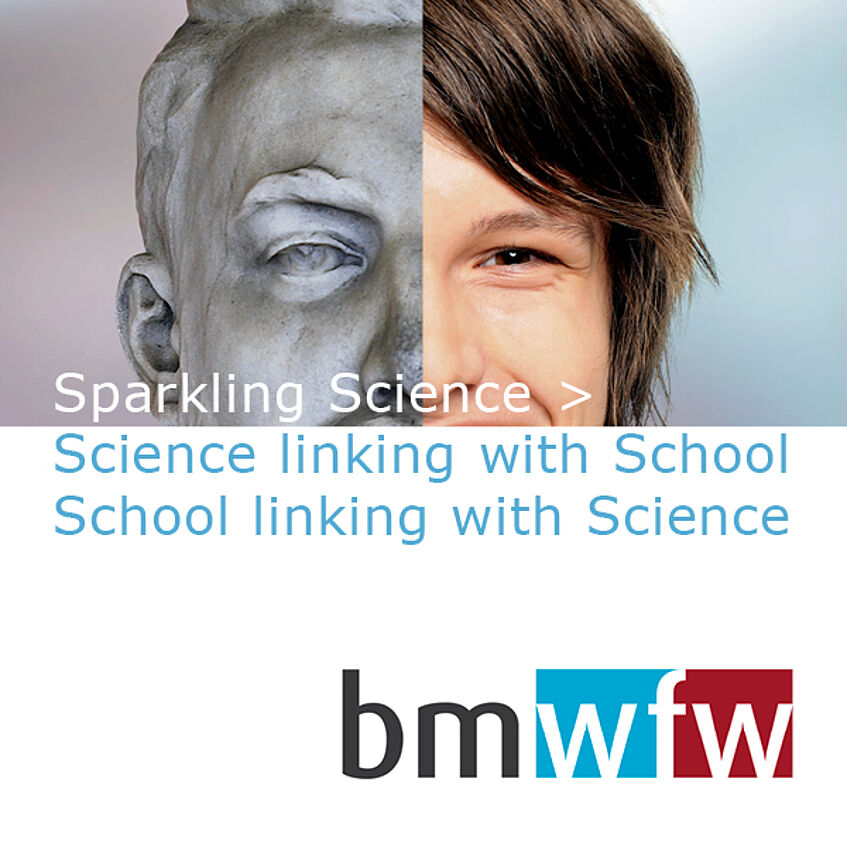SMART?Phone.
Folgen der Smartphone-Nutzung in der Lebenswelt von Kindern und Jugendlichen
Consequences of Smartphone Use in Children's and Adolescents' Everyday Lives
Projektleitung – Project Leader
- Univ.-Prof. Dr. Jörg Matthes
Abteilung Werbeforschung, Institut für Publizistik- und Kommunikationswissenschaft, Fakultät für Sozialwissenschaften, Universität Wien
Projektmitarbeiterinnen – Project Employees
- Dr. Desirée Schmuck, BSc
- Dr. Kathrin Karsay
- Sarah Ecklebe, MSc
Wissenschaftliche Kooperationspartner – Cooperation Partners
- Amsterdam School of Communication Research / ASCoR, Universität Amsterdam
- Institut für Medien- und Kommunikationswissenschaft, Universität Mannheim
Beteiligte Schulen – School Partners
- HAS Friesgasse, Wien
- Vienna Business School Akademiestraße, Wien
- Vienna Business School Hamerlingplatz, Wien
Medienberichte – Media
- APA Science: Smartphone Dossier (25.04.2018)
- APA Science: "Wie smart ist das Phone?" (25.04.2018)
Kurzfassung des Projekts (Deutsch)
Smartphones und das mobile Internet sind zum ständigen digitalen Begleiter im Alltag von Kindern und Jugendlichen geworden. Im Rahmen des SMART?Phone-Forschungsprojekts untersuchen Schüler/innen gemeinsam mit dem Wissenschaftsteam die Wirkung der Smartphone-Nutzung auf die erlebte Einsamkeit und die schulische Leistungsfähigkeit von Kindern und Jugendlichen unter Einsatz einer innovativen Methodenkombination.
Short Project Summary (English)
Smartphones and the mobile internet have become fully integrated in children's and adolescents' daily lives. Within the SMART?Phone research project students investigate together with the research team the effects of smartphone use on perceived loneliness and school performance of children and adolescents using an innovative multi-method-design.
Detaillierte Projektbeschreibung
Problem
Mobile Apps wie WhatsApp und Snapchat dominieren die Kommunikation von Kindern und Jugendlichen. Doch ist die permanente Vernetzung und Verfügbarkeit wirklich "smart"? Die Adoleszenz stellt eine Lebensphase dar, in der die Heranwachsenden besonders vulnerabel für die vom Smartphone ausgehenden Gefahren wie Kommunikationsstress oder Cyberbullying sind. Gleichzeitig können sie von den Potenzialen, die mit der Handynutzung einhergehen – wie die Beziehungspflege mit Gleichaltrigen –, stark profitieren. Eine umfassende Erhebung der positiven und negativen Einflüsse der Smartphone-Nutzung im Zeitverlauf auf zentrale Indikatoren der adoleszenten Entwicklung sowie die Untersuchung wichtiger individueller und kontextueller Einflussgrößen stehen jedoch bislang noch aus.
Projektziel
Das Projekt verfolgt drei Hauptziele:
- Das Projekt untersucht die positiven und negativen Begleiterscheinungen der Smartphone-Nutzung im Kindes- und Jugendalter im Zeitverlauf und berücksichtigt wichtige individuelle und kontextuelle Einflussgrößen.
- Qualitative und quantitative Befragungen der Jugendlichen und ihrer Eltern sowie die In-Situ-Erhebung des Nutzungsverhaltens erlauben einen einzigartigen Einblick in die Einflussfaktoren und Folgen der adoleszenten Smartphone-Nutzung.
- Die Schüler/innen werden als hochaktive Smartphone-Nutzer/innen in alle inhaltlichen und methodischen Schritte eingebunden und tragen mit ihrem subjektiven Erfahrungswissen zu einem ganzheitlichen Verständnis der Wirkungsprozesse bei.
Relevanz für die SchülerInnen
Die Schüler/innen lernen den wissenschaftlichen Arbeitsprozess kennen und werden an die Methoden der qualitativen und quantitativen Befragung sowie des Mobile Experience Samplings herangeführt, indem sie diese gemeinsam mit den Forscher/innen planen, durchführen und auswerten. Die Schüler/innen nehmen somit eine aktive Rolle im Forschungsprozess ein. Dabei forschen sie zu einem Thema, das Jugendliche bewegt und in dem sie selbst Expert/innen sind. Sie haben die Gelegenheit, ihren eigenen Umgang mit dem Smartphone im Alltag kritisch zu reflektieren und dysfunktionale Verhaltensmuster zu erkennen und zu verändern.
Detailed Project Description
Mobile Apps such as WhatsApp and Snapchat dominate children's and adolescents' communication habits. However, is the permanent connection and availability really "smart"? In adolescence, individuals are particularly vulnerable for the various dangers the smartphone use entails such as communication stress or cyber bullying. However, they can also strongly benefit from positive effects of smartphone use such as the bonding capital. Yet, existing research lacks a comprehensive analysis of the positive and negative effects of smartphone usage on adolescents' and children's development in the long term. Additionally, a systematic investigation of individual and contextual factors involved seems warranted.
Project Goal
- The project investigates the positive and negative effects of smartphone usage on adolescents' and children's development in the long term. Additionally, a systematic investigation of individual and contextual factors involved will be conducted.
- Qualitative und quantitative interviews as well as mobile experience sampling with adolescents and their parents allow a unique perspective on the influence factors and consequences of adolescent smartphone use.
- The participating students as highly active smartphone users contribute with their individual experiences to the investigation of the consequences of smartphone usage in adolescence in an important way.
Relevance for Students
Students will learn about scientific workflows. Specifically, the students learn about the research methods of qualitative and quantitative interviews as well a s mobile experience sampling as they help designing, conducting, and analyzing the studies with the researchers. Thus, the students take an active role within the project. Furthermore, they do a research on a topic that matters for adolescents and where they possess expertise. Finally, they have the opportunity to critically reflect their personal daily smartphone use, to identify dysfunctional smartphone use behaviors, and to change them.


